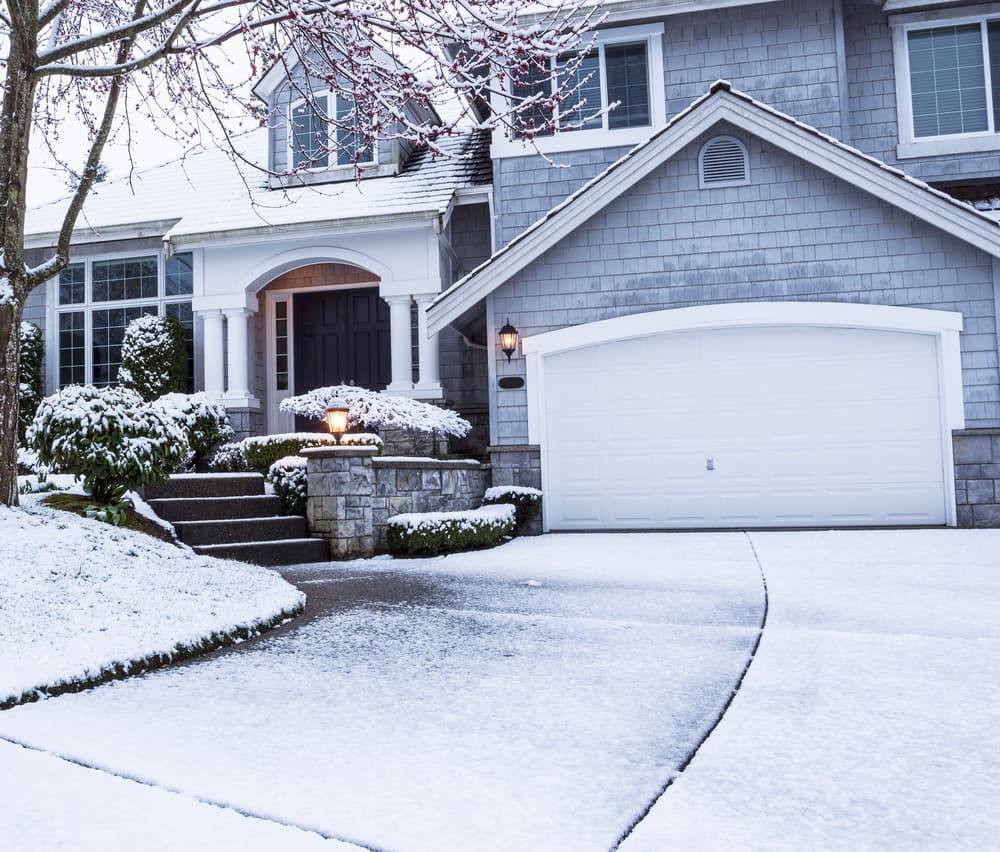How to Install French Doors: Step-by-Step
By Editorial Team
Updated on December 17, 2024

If you’re looking to let a little bit of light in between two otherwise dull or dingy rooms, or you’re looking for an alternative to the classic sliding door, then you might be in the market for French doors. These doors can be a beautiful addition to both classic and modern home décors.
However, installing French doors isn’t the easiest task. In fact, there is a bit of skill involved when it comes to the process. Of course, with a little bit of perseverance and hard work, it is easy to accomplish most things in the realm of home renovation. So, if you’re interested in doing so, read on for all of the step-by-step instructions for installing French doors.
How to install French doors
Preparation for French door installation

Photo: Deposit photo
A wonderful accent to add character and dignity to an interior or exterior of a home, French doors are a pair of doors which are generally equipped with glass panes for most of their length. These doors are unique in that they open outwardly, and close towards one another to form a barrier. In some cases, French doors were considered a safety hazard. But, by way of modern advancements, this is no longer the case. Although they used to be reserved for outdoor spaces, such as the patio, they are now widely used for the interior of homes. As mentioned, installing French doors is a bit of a complex process, and you’ll likely need an extra set of hands for the process.
Firstly, the list of the materials you’ll need is as follows:
Tape measure;
Hammer;
Power drill;
Regular drill bit;
Paddle bit;
Hole saw;
Philips-head screwdriver;
Pry bars;
Carpenter's square;
Chisel;
Flush cutting saw;
Rubber mallet;
Level (long in length);
Safety glasses;
Nails;
Screws;
Shims.
You will also need a French door kit and all of the necessary hardware, including doorknobs and latches.
Getting started
Start by removing the old door frame. For this job, you will require the assistance of a hammer and a pry bar as they will help you to avoid damaging the frame that’s in place. It is recommended that you label the trim pieces after removal, as this will help you to decipher where each one will go following their reinstallation.
Using a level as well as a carpenter's square, check the opening of the space where you plan to put your French doors, making sure you have squared it off. Make sure not to skip this step, as paying close attention to these details will make the installation process much easier.
To install the new door frame, hold it up in place and make sure it is level. Use shims to firm it up into place, drilling pilot holes through both the frame and the shims. Following this, drill or drive nails in just deep enough to hold the frame in place.
Fitting the french doors and finishing up

source: pixabay
Now, test fit the new doors to make sure that they remain snuggly in place. It is important to do this step before securing the frame permanently, as you’ll need the doors to be flush with one another while hanging above your floors at the correct height. Make any adjustments necessary, ensuring that the doors open and close correctly.
If you find that everything fits plumb in place, you can now secure the frame permanently. This job can be done using the proper screws for the material of your French doors. Once the door frames are in place, you can allow the doors to hang. Finally, install the hardware that you’ve chosen, or which came alongside your kit. For this part of the process, follow the instructions provided by the manufacturer.
For more information about interior doors, see:
Get 3 renovation quotes for your French door renovation project
RenoQuotes.com can help you get quotes for. By submitting your French door renovation project to us, we’ll put you in contact with top-rated contractors. Fill in the form on the homepage (it only takes a few minutes), and you will get estimates from certified professionals.
Dial 1-844 828-1588 to speak with one of our customer service representatives
Looking for something else?
Related articles
The latest industry news, interviews, technologies, and resources.

Editorial Team
•17 Jan 2025
Let go of your inhibitions and get swept away by the sheer modern look and design of a floating staircase. Marked by its minimalism, it seems to hover in mid-air, devoid of any apparent support, thereby creating an open space.

Amanda Harvey
•07 Nov 2023
As we all know too well, renovating your house or home can be extremely costly. Not everyone is able to spend the necessary funds on projects they may want or need to carry out.

Karine Dutemple
•07 Nov 2023
Appreciated for its incomparable beauty and elegance, white marble is a material that is suitable both for bathrooms and kitchens, used as a surface on a kitchen island, as a countertop or as flooring.

Léa Plourde-Archer
•07 Nov 2023
Winters in Canada are long, gruelling and freezing cold. Living in this country, you quickly discover ways to adapt to sub-zero temperatures: you purchase a down-filled, well-built jacket alongside some heavy-duty boots, you dress in layers and make sure little to no skin is exposed.

Amanda Harvey
•07 Nov 2023
Kitchens are the single most important room in the home when it comes to valuation. As a social space that is well-loved and well-used, the location of the kitchen is of the utmost importance. However, from time to time the kitchen rests in an awkward place, potentially lacking light, space or just isn’t ideally located. You might feel as though moving your kitchen proves impossible, but this job can be easily completed and lead you to the kitchen of your dreams.